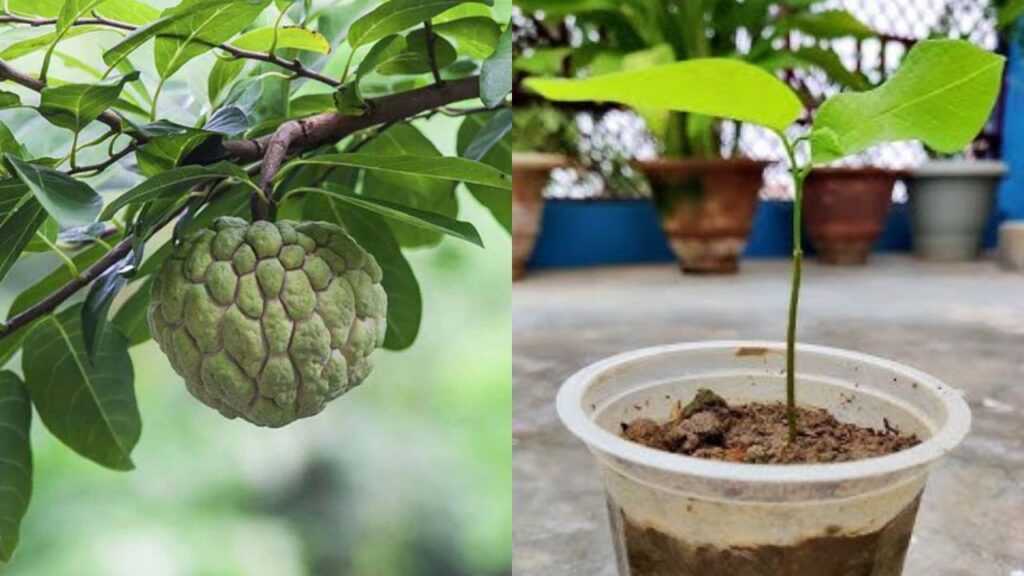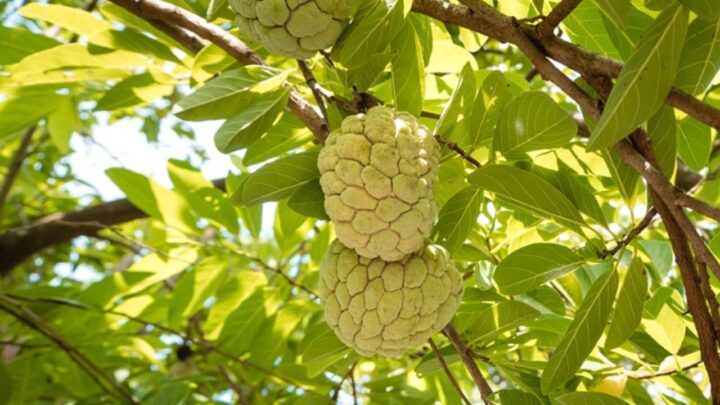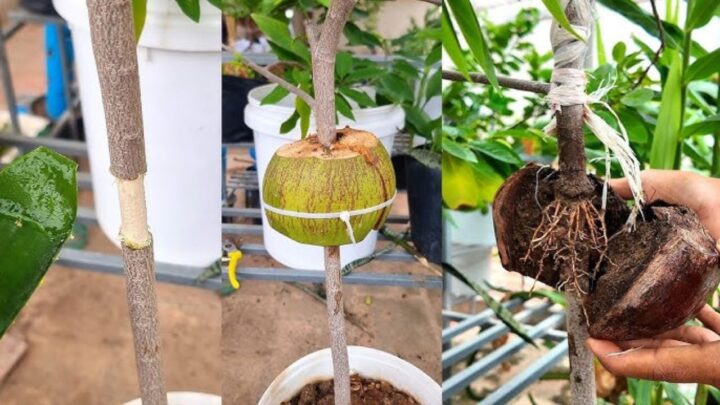Grow Sitaphal at Home : Sitaphal, also known as custard apple, is a sweet, creamy tropical fruit that can easily be grown at home with little effort. With a few simple tricks, you can enjoy organic, home-grown Sitaphal while saving money and relishing the joy of harvesting your own fruit.

How to Grow Sitaphal at Home Easily
Growing Sitaphal at home is perfect for beginners and garden lovers. This fruit plant thrives well in warm, tropical climates and can even grow in pots or small spaces. The key is to provide it with good sunlight, well-drained soil, and occasional care. Whether you’re in a city or a small town, the Sitaphal plant can adapt beautifully with minimal maintenance.
- Choose a healthy Sitaphal seed or sapling for planting.
- Pick a location that receives 5–6 hours of direct sunlight daily.
- Use well-drained soil mixed with compost or organic fertilizer.
- Water regularly but avoid overwatering to prevent root rot.
- Prune lightly during growth to help it branch out evenly.

Step-by-Step Guide to Growing Sitaphal at Home
- Step 1: Collect Quality Seeds or Saplings
Choose ripe custard apples and extract their seeds. Clean and dry them for 2–3 days before planting. Alternatively, buy a small Sitaphal sapling from a local nursery if you want faster fruit results.
- Step 2: Prepare the Planting Soil
Mix equal parts of garden soil, sand, and compost to create a rich growing base. Sitaphal plants grow best in slightly acidic to neutral soil, so avoid heavy clay or waterlogged areas.
- Step 3: Sow Seeds or Plant the Sapling
If you’re using seeds, plant them 1 inch deep in pots or directly in the ground. Keep the soil moist until germination begins, which usually takes 2–4 weeks. Saplings can be planted at the same depth as their nursery pots.
- Step 4: Watering and Sunlight Care
Place the pot or plant area where it gets ample sunlight. Water once every 2–3 days during summer, ensuring soil remains moist but not soggy. Reduce watering slightly in colder months.
- Step 5: Fertilize for Healthy Growth
After two months, apply organic compost or cow dung manure every 30–40 days. Avoid chemical fertilizers, as they may affect fruit flavor and plant health.
- Step 6: Harvesting Sitaphal Fruits
The Sitaphal plant starts bearing fruit within 2–3 years. Fruits are ready to harvest once they turn light green and start splitting slightly. Pick them gently to avoid bruising.

Extra Tips for Growing Sitaphal Successfully
- Plant Sitaphal during early summer for best germination results.
- Use neem oil spray to protect the plant from insects naturally.
- Mulch around the base to retain moisture and reduce weeds.
- Prune the plant annually to maintain shape and fruit quality.
- Harvest fruits early morning to keep them fresh longer.
FAQs
How long does it take for Sitaphal to bear fruit?
It usually takes 2–3 years for Sitaphal trees grown from seeds to produce fruits, while grafted plants may fruit earlier.
Can I grow Sitaphal indoors?
Yes, Sitaphal can grow indoors if placed near a sunny window or balcony. Ensure it gets enough light and warmth for proper growth.
What is the best fertilizer for Sitaphal?
Organic compost, cow dung manure, or bio-fertilizers work best for Sitaphal plants, promoting healthy roots and sweeter fruits.
Why are my Sitaphal fruits not growing properly?
This can happen due to lack of sunlight, overwatering, or nutrient deficiency. Adjust watering and add organic compost regularly to fix this.
 No Garden? No Worries! Discover How to Grow Fresh Veggies at Home and Feed Your Family All Year Long
No Garden? No Worries! Discover How to Grow Fresh Veggies at Home and Feed Your Family All Year Long
Growing Sitaphal at home is one of the most rewarding gardening experiences. With a little patience, care, and love, you can enjoy the delicious taste of your own fresh, chemical-free custard apples—right from your backyard or balcony!



